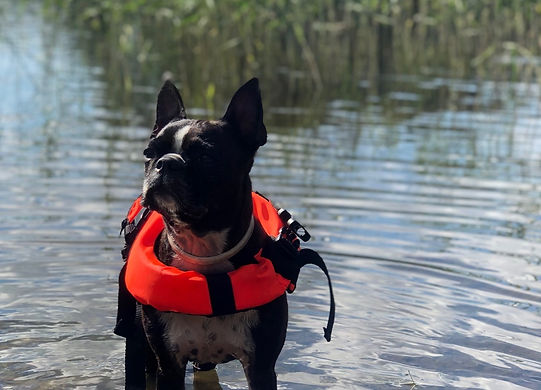

Which pets can travel?
Travel planning is wonderful, and the idea of a hiking trip or a city vacation with your own pet easily captures one's imagination! To ensure that the trip is successful in every way, it is advisable to consider the specific characteristics of your pet when planning the journey, such as whether their temperament is suitable for a changing and new environment. The age, size, anatomical features and environmental requirements of the pet can also pose challenges during the trip. On this page we discuss things that are worth considering before embarking on a trip. Additionally, you will find specific characteristics related to certain cat and dog breeds that owners should be aware of.
Cats, Dogs and Ferrets
Cats, dogs, and ferrets travel within the EU according to uniform requirements. Please refer to the travel requirements here. Traveling with dogs is likely the most common, as they are often accustomed to accompanying their owners outside of the home. Especially with indoor living cats, it is advisable to try short trips outside the home before planning a longer journey with them. However, both cats and dogs are individuals - while one may become stiff with fear, another may eagerly explore new places or just sleep all trip long!
Other Pets
There are no uniform travel requirements for traveling with other pets (such as rabbits, rodents, birds, reptiles, amphibians, and fish) within the EU, as there are for traveling with cats, dogs, and ferrets. Instead, each country sets its own conditions for importing these animal species. Depending on the species, they may require, for example, an import permit, a specific type of identification, or a health certificate. You can find more information about traveling with other pets here!
Please note that the Travelpet website does not cover traveling with large domestic animals such as ponies, horses, donkeys, etc.
Only travel with a healthy Pet
In the EU, when traveling with cats, dogs, and ferrets, separate health certificates and veterinary health checks are not required. However, it is the owner's responsibility to ensure that the pet is healthy, capable of traveling, and able to tolerate any potential stress caused by the journey. Extra consideration should be given when traveling with very young or elderly pets. It may be challenging to navigate crowded areas with an energetic puppy if they are not yet accustomed to walking on a leash. Young and old animals are also more susceptible to environmental heat, as their thermoregulatory systems are not as developed as those of adult animals.
Make sure your pet has up-to-date vaccinations and tick and other parasite prevention treatments. More information on these topics can be found in the section on infectious diseases!
Accidents and incidents can happen during the trip, so it is advisable to have a pet’s first aid kit prepared. A first aid kit and certain self-care products are also recommended for every pet owner to have at home.
If you are unsure whether your pet is capable of traveling, please contact your veterinarian or schedule a remote consultation!

Snub-nosed breeds
Several airlines have already restricted air travel for brachycephalic (snub-nosed) cat and dog breeds. Traveling with the individuals of snub-nosed breeds should be carefully considered, especially during hot weather, and special attention should be paid to ensuring their sufficient cooling. Here is a rough list of brachycephalic breeds and you can find more information about the specific characteristics when traveling with them.

Fighting Dog breeds
Many airlines and some countries in Europe prohibit certain breeds of fighting dogs from flying or entering the destination country. Some airlines transport these breeds in special transport cages. You can find an indicative list of these breeds and tips for traveling with them here.
